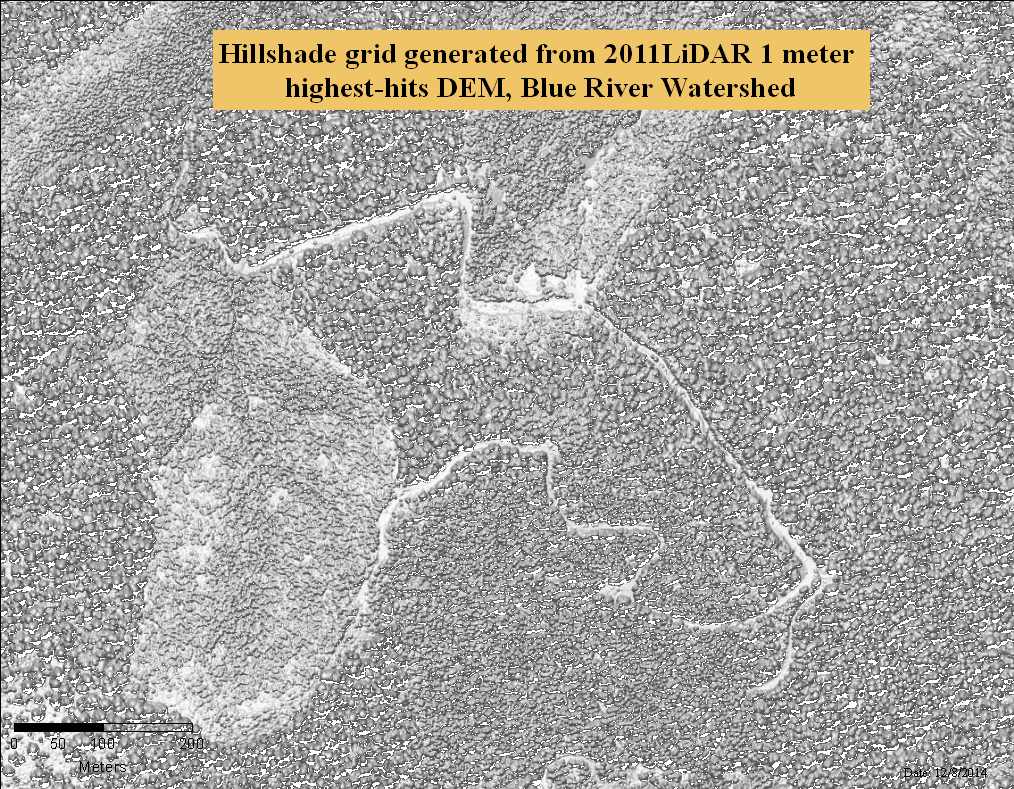Hillshade grid generated from 2011 LiDAR 1 meter highest-hits DEM , Blue River Watershed
Raster Dataset

Tags
USFS, Oregon, LiDAR, bare earth,
Linn County, digital terrain model, EPA, bare ground, Light Detection and Ranging, Pacific
Northwest, Blue River, elevation data, topography, high-resolution, DEM, Lane
County
The purpose of the hillshade is to provide topographic relief for maps, figures, and visualizations. The hillshade can also be used to capture features (roads, buildings, bridges), and to locate geological features such as landslides, stream channel characteristics, and earth movement. This data set is suitable for detailed work. Visualizations of the raw point clouds would be appropriate for those looking for sub-meter accuracy.
The hillshade was generated from the 1 meter highest-hits digital elevation model(DEM) based on the 2011 LiDAR flight over the Blue River Watershed, Willamette National Forest. The hillshade is at 1 meter resolution, and provides a detailed visualization of the forest, including the vegetation. The hillshade command in spatial analyst was used with a sun azmuth of 345 degress and the altitude was set for 65 degrees.
There are no credits for this item.
In some areas of heavy vegetation or forest cover, there may be relatively few ground points in the LiDAR data. TINing the points produces large triangles and hence the elevations may be less accurate within such areas. Elevation values for open water surfaces are not valid elevation values because few LiDAR points are returned from water surfaces. Triangles were created across water surfaces by interpolating from the nearest land points.
Extent
West -122.334155 East -122.129467 North 44.340085 South 44.202966
Maximum (zoomed in) 1:5,000 Minimum (zoomed out) 1:150,000,000